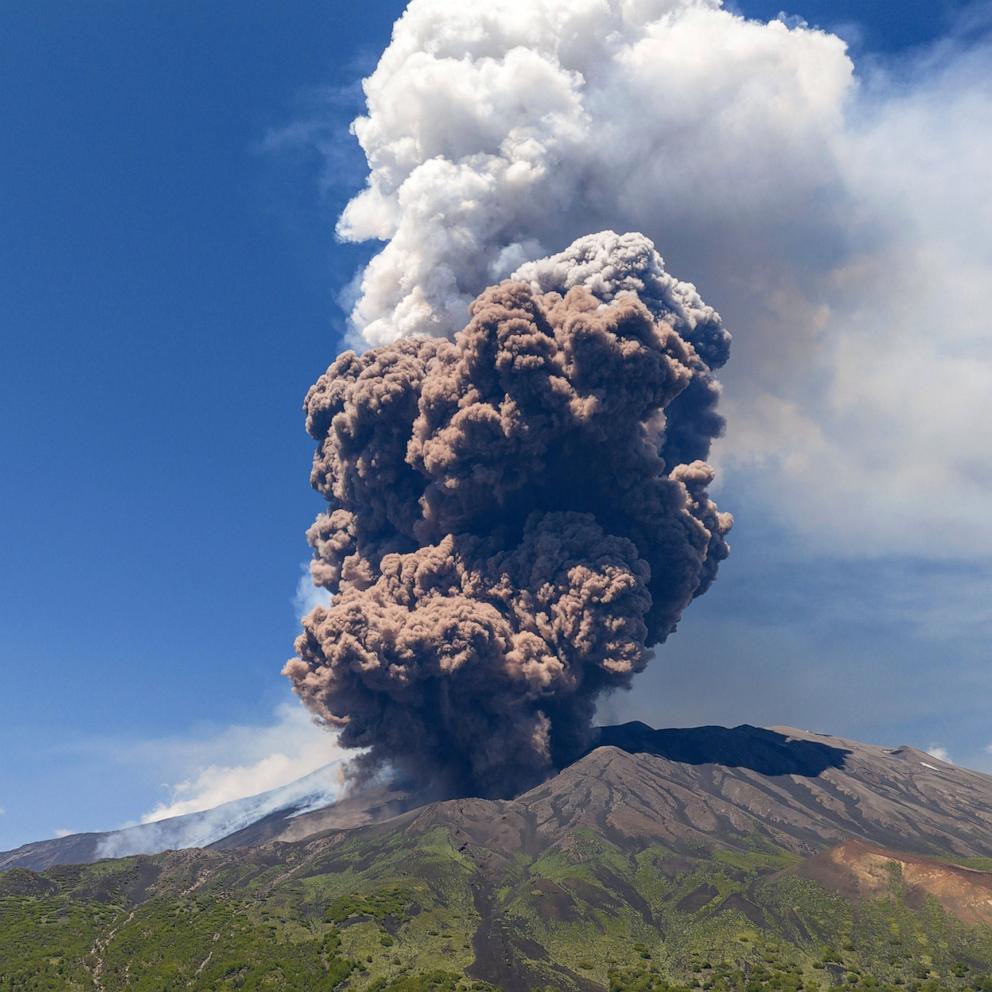Transport of mercury through rivers has risen threefold since Industrial Revolution, new study finds
Human activity has caused the amount of mercury being transported through rivers all over the world to increase up to threefold since the Industrial Revolution, making regulations to prevent toxic metals from entering waterways even more necessary, according to environmental policy experts.
Industrial practices such as coal combustion, mining and manufacturing have increased mercury pollution and changed the way it moves through rivers, causing a sharp rise in mercury concentrations around the world since the 1850s, according to a paper published Wednesday in the journal Science.
Scientists pay especially close attention to neurotoxins like mercury due to its ability to accumulate in fish and rivers, Yanxu Zhang, an associate professor at Tulane University's School of Science and Engineering and co-author of the study, told ABC News.
Researchers used process-based models to reconstruct the amount of mercury emissions that would have existed in waterways naturally from events such as volcanic activity or wildfires, Zhang said.
They found that between 1845 and 1859, the average baseline river cycle was roughly 390 megagrams of mercury per year. Today, rivers carry about 1,000 megagrams per year -- equating in about a 585 megagram per year increase in the last two centuries.
The researchers also corroborated this finding with global historic sediment cores, according to the study.
The findings of the report are "not at all surprising," John Holdren, a professor of environmental science and policy and former science adviser to President Barack Obama, told ABC News.
"It just adds one more data point to the clear evidence that many human environmental impacts far exceed the scale of natural influences," Holdren said.

The presence of mercury then poses a health risk to people living nearby -- especially in developing regions in South America, Southeast Asia and Africa, Zhang said.
But proposed rollbacks on U.S. Environmental Protection Agency regulations that tightened emissions standards for toxic metals like mercury could soon put Americans at risk of increased mercury levels in U.S. waterways, according to environmental policy experts.
Earlier this year, EPA Administrator Lee Zeldin announced a massive deregulation campaign, rolling out more than two dozen policy announcements to propose changes on several emissions regulations.
The actions included revisions to the Mercury and Air Toxics Standards (MATS), which set limits on mercury and arsenic pollution from coal and oil power plants -- rules the EPA described in a press release in March as "overreaching."
During a press conference on Wednesday, Zeldin said that if the proposed changes to MATS are finalized, "no power plant will be allowed to emit more than they do today -- or as much as they did one or two years ago."
"These decisions allow more mercury into the air and water, even though mercury is known to harm children's brain development, and arsenic is linked to cancer and birth defects," James Pew, director of federal clean air practice at Earthjustice, told ABC News.
In March, the U.S. Supreme Court struck down a requirement from the Clean Water Act that forced polluters to comply with water quality standards as a condition of their permits.
Last month, the House of Representatives voted to allow about 1,800 facilities -- including chemical plants, refineries and pesticide manufacturers -- to "reclassify" themselves as minor polluters and stop controlling, monitoring or reporting toxic emissions under the Congressional Review Act. The vote passed 216 to 212, with all Democrats and one Republican opposing it. The Senate had approved the resolution weeks earlier.
"All of Donald Trump's actions since taking office are taking us backwards on mercury pollution and threatening our health," Sierra Club Climate Policy Director Patrick Drupp told ABC News.

Mercury -- along with other heavy metals, such as lead -- is one of the "clearest" cases of public health knowledge that has been translated into environmental standards in the U.S. over the last 50 years, Dan Esty, a professor of environmental law and policy at Yale University and former commissioner of Connecticut's Department of Energy and Environmental Protection, told ABC News.
The report is "another reminder of the massive irresponsibility of the EPA's headlong retreat, under President Trump and EPA Administrator Zeldin, from science-based approaches to protecting public health from environmental harms of all kinds," Holdren -- the environmental science professor -- said.
Mercury is toxic to both animals and people in a number of ways, necessitating effective controls to keep people from being harmed, Paul Anastas, director of the Center for Green Chemistry and Green Engineering at Yale University and former assistant administrator for the EPA, told ABC News.
"It's always foolish to ignore mercury," Anastas said. "...If you're not afraid of mercury, you're not paying attention."
Exposure to mercury typically occurs from eating fish and can cause a host of symptoms, such as loss of peripheral vision, the feeling of "pins and needles" in hands and feet and impairment of speech, hearing and walking, according to the EPA. Mercury exposure to infants in the womb can have a severe impact on brain and nervous system development, the EPA noted.
The rollbacks will likely trigger more child deaths and increase the number of cases of cancer, lung disease and heart attacks, Ryan Maher, an environmental health attorney for the Center for Biological Diversity, told ABC News.
The eastern U.S., which contains many industrial sites that could potential have mercury in waste discharges, could especially be impacted, study co-author Zhang said.
Mercury contamination is already happening in Minnesota, where residents have been advised by the Minnesota Pollution Control Agency to restrict eating fish from rivers, lakes and other bodies of water that have excess mercury to once per week.
If mercury levels increase, humans may have to balance fish consumption to avoid exposure, Zhang said.




